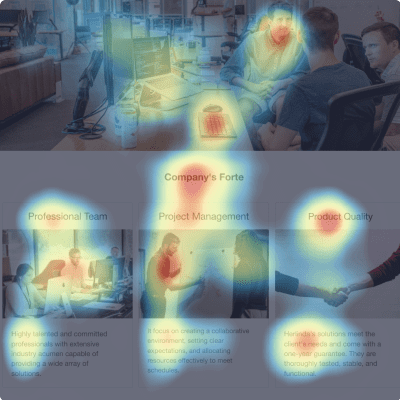Web Design and Development

Nowadays, Millions of beautiful and engaging websites live on the Internet, including pictures, animations, videos. Yet, building a website involves numerous complexities and requires trust and fluent communication between the client and the builder. For example, you can end up with a beautiful website that does not deliver value to your customers. Or your Website does not drive sales because your customer cannot find your site while searching on the Internet. Herlinda understands this challenge and builds great-looking search-engine-friendly websites. In addition, we offer several packages to fit your budget.
Next, we briefly describe "Web Design" and "Web Development"; explain the complexities mentioned above; and disclose our pricing structure.
"Web Design" and "Web Development"
Web design is the first stage of building a website and concentrates on the look and feel of the site: layouts, colors, typography, Etc. In contrast, Web Development is the next stage and turns the design into a functional website.
Wikipedia asserts in this article that:
Web development is the work involved in developing a Web site for the Internet or an intranet. Web development can range from developing a simple single static page of plain text to complex web applications, electronic businesses, and social network services.
Herlinda's development process includes both Web Design and Development for every client.
Complexities Building Websites
Practically, a website must solve a specific problem for a particular audience. So, in general, the site must address the requirement of three parties: the client, the client's customers, and the Internet search engines like Google and Bing. But, the design principles recommended by the industry experts often contradict the requirements to build a Search Engine Optimized (SEO) website. For instance, because cybernauts do not read but scan websites, usability experts recommend presenting concise information; however, SEO specialists recommend detailed and unique content. To deal with these complexities, Herlinda has created a process that includes :
- Defining the problem and the target audience.
- Choosing the right tech stack.
- The visual design.
- Building a great-looking and high performant Website.
Defining the Problem and the Target Audience
To devise the right solution, the builder and client must team to identify and isolate the problem. Then, the problem lets us determine the target audience and what the site will include and exclude. A clear defined problem facilitates collecting and organizing the requirements the site must solve. And the builder can start building the Website in iterative stages where new requirements can signal the rebuilding of previous steps. Also, The customer naturally can visualize new opportunities or ideas interacting with the Website under construction.

The audience must include the client's customers and must address their business and physical requirements. For example, disabled persons use screen readers, and good vision readers favor light themes while impaired readers prefer dark themes. The clients know the needs of their customers, but the design must follow the point of view of the final customer at the end. For example, if the client owns a recurring client base, the design must quickly lead the customer to check out; otherwise, the site must provide search and display functionalities.

Search engines index the content of a website for ranking purposes. So the design must include summarized and detailed content. For example, the giant e-commerce Amazon shows a summary list of products and a landing page for every product containing exact information.
Choosing the Right Tech Stack
Besides the Website's good appearance, technology trends, security, speed define its quality and evolution.

Facebook and Google have created cost-free frameworks such as React and Angular to build websites during the last years. These frameworks come with many features that can accelerate development time and can increase quality. In addition, these giants update and enhance their frameworks every year. This trend plays an essential role in choosing the tech stack.
To save costs, builders offer cheap packages to host websites. Yet, the clients do not know where are located the data centers hosting their websites. However, Google and Microsoft penalize many Asian data centers because their tenants produce spam and lack security. Therefore, the reputation of the data center encompasses several factors in SEO rankings.
Google and other companies provide browser plugins and online Websites for auditing purposes. So, please ask your builder to give the auditory reports guaranteeing the quality of your site.
The Visual Design.
Determining the colors and typography is the first step in creating the visual design. Often, Web designers follow the 60/30/10 design rule. "60" is the predominant color for backgrounds, "30" is the secondary color for typography, and "10" is for buttons and other calls to action elements. For the new Website, the client chooses their favorite colors. Otherwise, the colors come from the existing marketing materials. The typography defines one or two appropriate fonts for text. Yet, the Website must embed the fonts to ensure the same visual presentation across different devices and geographical locations. Colors and Typography must address the audience by providing the option for dark and light themes.

The next step consists in creating a visual prototype to simulate the behavior of the Website. These prototypes provide valuable early feedback and must contain visibility and attention maps. Artificial Intelligence tools make these maps, which show the areas of the Website the readers pay attention to or dismiss.
Once the client approves the design, the process moves forward to the development stage.
Building a great-looking and high performant Website
Because first impressions matter, our team builds beautiful, accessible, and efficient Websites. We incorporate the latest design principles along with several technologies to create engaging designs.
In this stage, our team follows the design and creates a responsive Website that works on TV, desktop, laptop, tablet, and mobile screens. Of course, the Website also must be compatible with all web browsers and their previous versions.

Transferring images, videos and retrieving data from databases creates traffic and slows down the Website. As a result, the builder must incorporate a Content Delivery Network (CDN) storage for media files and caching technology to avoid round trips to the database.
Herlinda incorporates a fully responsive design, CDN storage, and Caching technology in every Website.
Our Price Structure
We do not charge by the hour nor by the number of pages but by the entire project. Our team has already developed a great variety of artifacts we reuse to accelerate development.
Herlinda's fees include the development time primarily. However, knowing the requirement in advance, having the website draft with media files, and having fluent communication could result in consistent savings for our clients.
Our minimum package comes with one year guarantee, costs between $1,497 to $1997, and includes all the mentioned benefits and functionalities.
We recommend that our customers host their websites in the US-based based data centers for security and optimal performance.

